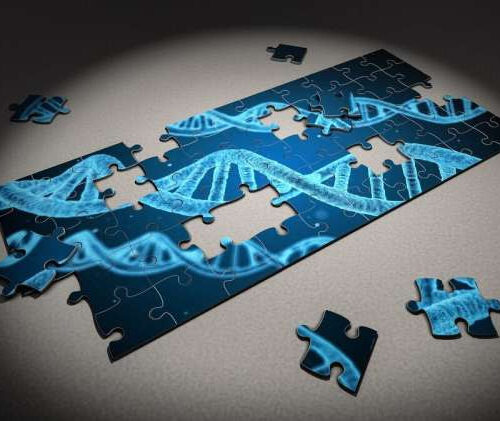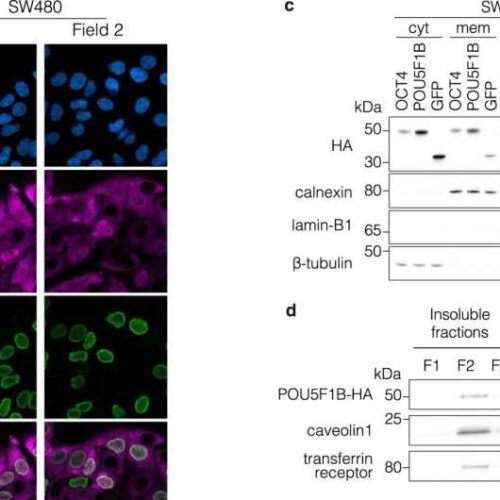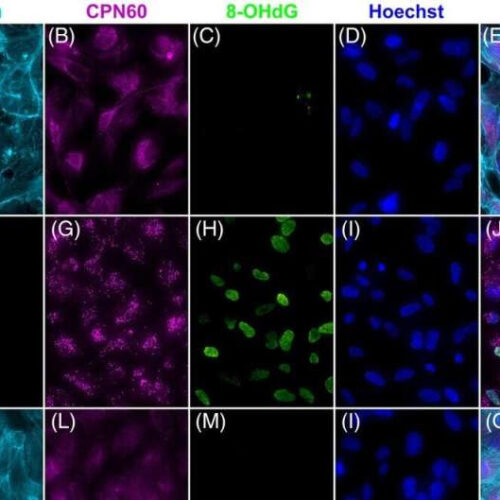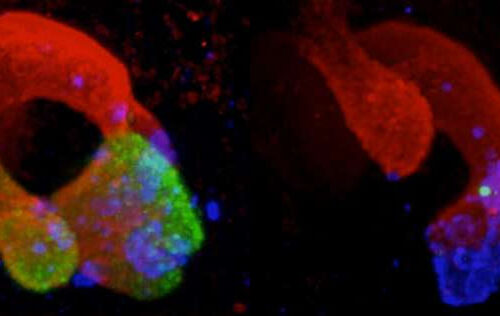by Wellcome Trust Sanger Institute Credit: CC0 Public Domain An international consortium of researchers has identified genetic variants in 10 genes that elevate a person’s susceptibility to Crohn’s disease, a form of inflammatory bowel disease. Led by researchers from the Wellcome Sanger Institute and the Broad Institute of MIT and Harvard, the study is the largest...
Category: <span>Genetics</span>
GENE MUTATIONS DRIVE BILE DUCT CANCER
The paper in Cell Reports details the cooperation of two known cancer genes, Arid1a and Kras, and how they disable tumor suppressor activity. When both genes are mutated—particularly Arid1a—the pathways that usually shut down tumor activity cannot perform. The goal is to use the data to find drugs that could restore the normal function of a mutated Arid1a, to...
In five patients, Sangamo’s Fabry disease gene therapy appears to be working so far
While Sangamo’s sickle cell partnership with Sanofi ground to a halt earlier this year, the California biotech’s Fabry disease program, still in its early stages, has been quietly chugging along. In Tuesday’s update on the gene therapy trial, adding two more patients from its last interim readout in November, Sangamo reported that it has begun...
Genetic discovery could improve treatment of colorectal cancer
by Rémi Carlier, Ecole Polytechnique Federale de Lausanne POU5F1B differs from OCT4. a Representative immunofluorescence–confocal microscopy of POU5F1B-HA overexpressing SW480 cells, with DAPI in blue, HA in pink, and the nuclear membrane marker lamin-B1 in green. Two fields out of eight are shown. b Immunohistochemistry for endogenous POU5F1B in adjacent normal colon and primary colon...
Possible new cancer treatment target discovered
by University of Gothenburg Chandrasekhar Kanduri and Meena Kanduri, Institute of Biomedicine, Sahlgrenska Academy at the University of Gothenburg. Credit: Elin Lindström Researchers at the University of Gothenburg have identified a previously unknown mechanism controlling tumor growth in cultured cells and mice. This discovery may potentially enable future development of new drugs against a range...
Stolen DNA strengthens immune diversity
by Max Delbrück Center for Molecular Medicine Portrait of Kathrin de la Rosa. Credit: Pablo Castagnola, MDC A few years ago, Professor Kathrin de la Rosa and her colleagues in the lab of the Swiss immunologist Antonio Lanzavecchia made an unusual discovery. The team found antibodies in the blood of malaria patients that had been...
New gene therapy shows promise for treating age related macular degeneration
by Trinity College Dublin Rescue of ARPE19 cells insulted with NaIO3. 5.0 × 104 ARPE19 cells were transduced with AAV2/8-ophNdi1 5-h post-seeding; MOI = 5.4 × 105 (K–O). Twenty-eight-hour post-transduction cells were insulted with 5-mM NaIO3 (F–O) and 24-h post-insult cells were fixed and stained with Phalloidin-iFluor 647 (F-actin, light blue), and CPN60 (mitochondrial marker, magenta) and 8-OHdG-Alexa Fluor 488 (oxidative stress marker, green) immunocytochemistries;...
Gene therapy for completely color blind children partly restores cone function
by University College London Credit: CC0 Public Domain Gene therapy has partly restored the function of the retina’s cone receptors in two children who were born completely color blind, reports a new study led by University College London (UCL) researchers. The findings, published in Brain, provide hope that the treatment is effectively activating previously dormant communication...
People with similar faces likely have similar DNA
CELL PRESS IMAGE: PHOTOGRAPHIC EXAMPLES OF LALS USED IN THIS STUDY CREDIT: FRANÇOIS BRUNELLE A collection of photos of genetically unrelated lookalikes, along with DNA analysis, revealed that strong facial similarity is associated with shared genetic variants. The work appears August 23rd in the journal Cell Reports. “Our study provides a rare insight into human likeness...
Researchers show how mutations in ‘dark genome’ cause pancreatic malformations
by Center for Genomic Regulation Mice with a deletion in the pancreas agenesis enhancer do not express PTF1A (green) in embryonic multipotent pancreatic progenitors, leading to underdeveloped pancreas and insulin-deficient diabetes. Immunofluorescence of embryonic pancreatic buds from control (left) and enhancer-deleted (right) mice stained for PTF1A (green), PDX1 (red), glucagon (blue). Credit: Miguel Angel Maestro/Developmental...








